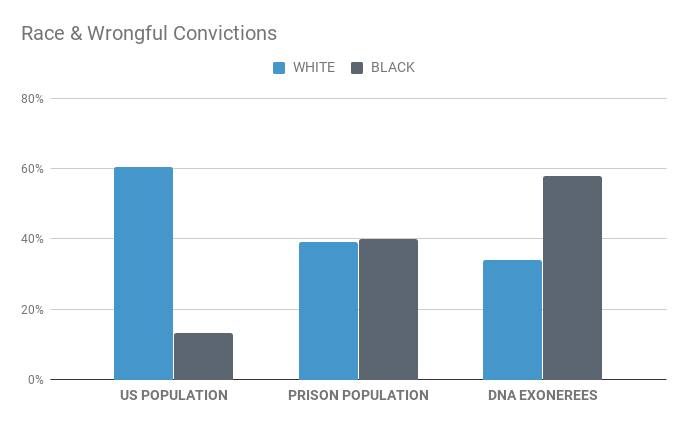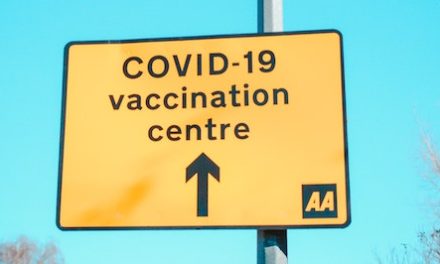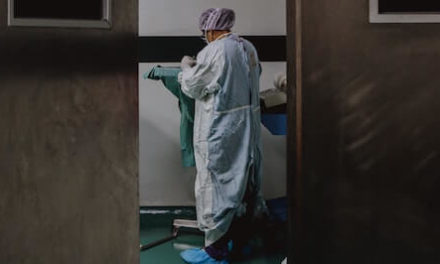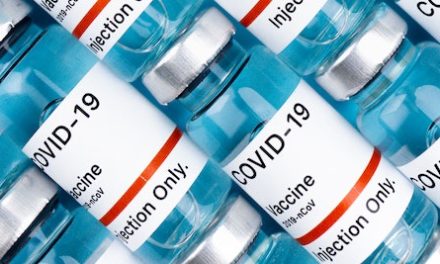Abstract
The Prison-Industrial Complex (PIC) describes a system in which the government and private agencies involved in the operation of a prison work together to exploit incarcerated individuals for personal gain. This paper offers a clear analysis of the PIC’s effects on the mental health and rehabilitation of incarcerated individuals. It clearly depicts that the continued use of forced labour inside prisons is essentially rebranded slavery. This paper explores how the economic motivations for mass incarceration has led to the prioritisation of profit over rehabilitation, resulting in high recidivism rates and therefore a continued cycle of criminalisation. Lastly, this paper highlights the denial of basic human rights and the prevalence of unsafe workplace conditions in prison that have negative consequences on prisoners’ mental health. The paper concludes that the PIC system is unjust, and incompatible with rehabilitation and human rights. The denial of basic human rights and educational opportunities, and the lack of health support, coupled with harsh punishments and forced labour, have a negative impact on the prisoners’ mental health and their rehabilitation prospects. The need of the hour is for a prison reform that prioritises rehabilitation, human dignity, and the elimination of forced labour.
Introduction
The Prison-Industrial Complex (hereinafter, “PIC”), a term introduced by activists and scholars, describes a system in which the government and private companies/communities work together to exploit incarcerated individuals for personal gain, using prison labour to maximise the profits of these private companies. Prison labour provides these companies with an unethical way to generate money without any compensation, health benefits, or insurance for the labourers.
“What are the effects of prison-industrial complexes on the mental health and rehabilitation of prisoners?”; this is the question that this paper strives to answer. Why does this question matter? Those incarcerated are secluded from society under the pretence of rehabilitation, yet no efforts are made to equip them with useful skills, such as education, or to improve their mental health – two things that are proven to reduce recidivism. In the United States of America (hereinafter, “USA” or “US”), $84.6 billion in tax dollars go to both public and private prisons annually. When so much money is being funnelled into the penitentiary system and yet it is not yielding positive results, surely the aims that PIC hold must be questioned. The mental health and rehabilitation of prisoners is of utmost importance, and so this paper asks, how could it not matter?
Prison-industrial complexes must be stopped, not only due to the ethical and moral implications of this system but also because of the threat it poses to what the law should stand for: justice. If specific individuals (corporations and governments in this case) are allowed to deny civilians their rights, this shows an imbalance and discredits the law. A total rejection of the law with no consequences for one select group of people means that others will likely follow. The law is meant to act as a controlling force, regulating actions to make sure that every individual has their minimum rights. If the law is not being followed and that breach in the law is not being addressed, it breaks the belief that the law is equal to all. Therefore, not only are PICs a threat to individuals, but they are also a threat to society as it questions the very system that regulates it.
This paper will explore the use of forced labour in the prison-industrial complexes of the United States of America, the economic incentives for mass incarceration, and the conditions and lack of rights under which prisoners are forced to work. This paper aims to share a factual, humanitarian perspective on the prison-industrial complex.
Research Question
- What are the effects of the US prison-industrial complex on the mental health of prisoners, and how does this impact rehabilitation?
Research Aims
This research paper aims to offer a clear analysis of the effects that the blatant human rights violations in prison-industrial complexes have on prisoners. The paper traces the historical context for the prison-industrial complex and explores the lack of effort made to rehabilitate prisoners and the reasons behind it. The paper further studies the effect that neo-slavery has on prisoners’ mental health. Do the economic incentives for mass incarceration affect attempts to rehabilitate prisoners? Does the substandard nature in which prisoners are working affect their mental health and thus hinder their chances of rehabilitation? Through this paper, the authors aim to remind people that although prisoners are often dehumanised by the media, they are indeed humans and deserving of their rights.
A. The Use of Forced Labour in Prisons is Just Rebranded Slavery
When prisons were first introduced, they were seen as a progressive alternative to capital and corporal punishment. While intended as a humane alternative, the prison system has evolved into a deeply problematic institution. In modern-day prisons we now see forced labour being used as rebranded slavery, particularly targeting marginalised communities, and perpetuating racial and economic inequities. The key points this section will be exploring are: the 13th Amendment and the continuation of forced labour, racial disparities and the war on drugs, dehumanisation and lack of rehabilitation, and inadequate healthcare and gender issues.
The 13th Amendment to the USA’s Constitution states, “neither slavery nor involuntary servitude, except as a punishment for crime whereof the party shall have been duly convicted, shall exist within the United States, or any place subject to their jurisdiction”. The first five words of the 13th Amendment sound progressive and humanitarian; finally, the abolition of slavery has arrived. However, when one continues reading the legal provisions, one realises the loopholes. In response to the abolition of slavery, Southern state legislatures passed “Black Codes”. Black Codes were laws only applicable to African-Americans, such as loitering, breaking curfew, and vagrancy. It is through these codes that slavery persisted (Equal Justice Initiative, 2013). The exception clause gave way to practices shockingly similar to slavery, such as convict leasing. Convict leasing was the practice of renting out the services of convicts to private parties such as plantations, farms, mines, lumber yards, brick yards, manufacturing facilities, factories, railroads, and road construction; the last state to ban it was Alabama in 1928 (Spence, 2017). However, many forms of it persisted until it was finally abolished by Franklin D. Roosevelt via Frank Biddle’s “Circular 3591” in 1941. It mainly occurred in the South following the emancipation of enslaved people, and it predominantly affected African-American men. Although convict leasing was outlawed, forced labour in prisons still exists, and has been an incentive for US states to criminalise minor offences to maintain a labour force for corporations in search of cheap labour.
Angela Davis, an activist and prison abolitionist, believes that the “war on drugs” is a tool for expanding the prison-industrial complex and reinforcing racial hierarchies (Davis, 2003). The war on drugs has always disproportionately affected African-American and Latino communities in the United States; “approximately 57% of people incarcerated in state prisons, and 77% of people incarcerated in federal prisons for drug offences, are Black or Latino, compared to 30& of the U.S. population” (Drug Policy Alliance, 2015). It is consistently documented that the rate at which African-Americans use drugs is comparable to that of other ethnicities, so how is it that they are incarcerated or receive longer sentences more frequently than their White counterparts? It is abundantly clear that these racial disparities are linked to the continuation of forced labour, as the war on drugs has essentially criminalised African-American and Latino communities in order to supply cheap labour to prisons. It seems to be that under the guise of crime control the system has continued its historical exploitation of marginalised groups.
This form of neo-slavery has aided in further dehumanising some of the most vulnerable people in our society, and thus has detrimental effects on rehabilitation goals. Prisoners are forced to work long hours with barely a dime to show for it, and are denied educational and vocational training that could prove beneficial to their reintegration into society. In contrast to the estimated 18% of the population with a mental illness, an estimated 44% of those in jail and 37% of those in prison have a mental illness (SAMHSA, 2024), yet the mental health of prisoners is often disregarded and allowed to worsen due to the isolation and ostracisation that prisoners are prone to. Rehabilitation efforts are neglected, the mental health of the prisoner suffers, and as a result, prisoners are not equipped with sufficient skills to rebuild their life once released. It is due to these breaches in justice that ex-convicts are often kept in a cycle of poverty and recidivism. Prisons clearly place punishment and labour exploitation over rehabilitation and are consistently proving to the world that they prioritise profit rather than rehabilitation, to the point where one must wonder if they are in fact encouraging recidivism.
The inadequate healthcare offered to those incarcerated, specifically to women, reflects broader systemic issues within the penitentiary system. Dominique Morgan, an individual diagnosed with HIV, is an example of a prisoner being denied proper medical assistance. Dominique would start work at 4 am to prepare for breakfast and would additionally work at dinner time. In total Dominique made $2.25 per day and was denied sick days despite his illness (Sarah Payne, 2023). Being denied medical care, which sick days are, is a breach of human rights, and reflects just how little care and dignity is given to those incarcerated. Dominique’s story is unjust yet unfortunately one of many. Women often face unique health issues yet there are one too many cases of women being denied medical access, even when suffering from chronic illnesses. These healthcare inadequacies are part of the broader dehumanisation of prisoners, particularly women, within the system. The neglect shown in the penitentiary system not only exacerbates health disparities, but also demonstrates the inherent gender biases in the prison system, which disproportionately affect marginalised women (Payne, 2023).
To conclude this point, this section argues that the forced use of labour in the prison system is a form of modern slavery that perpetuates the exploitation and dehumanisation of marginalised communities under the guise of punishment. This section explored the historical context of the use of forced labour in the prison system, with an in-depth exploration of the 13th Amendment, the disproportionate effects of the war on drugs on African-American and Latino communities, the dehumanisation and recidivism that the prison system perpetuates, and the medical and gender challenges faced in prisons. Overall, this paper calls for the ultimate dismantling of the structure that allows the exploitation of marginalised communities to continue, and for a prison reform that prioritises rehabilitation, human dignity, and the elimination of forced labour. Having argued that the current prison-industrial complex in the US is a form of modern slavery, the next section of this paper delves into the economic incentives of mass incarceration.
B. The Economic Incentives for Mass Incarceration
“We are treated as animals and dummies as if we cannot learn from our mistakes. Take note all of my brothers and sisters, look at how we are being treated, do not allow yourselves to become raw material for the prison-industrial complex.” (Smith, 2000)
Despite the countless documentation of human rights violations during prison labour, many major corporations, including well-known names such as McDonald’s and Starbucks (American Friends Service Committee, 2015), continue to use prison labour for their personal benefit (Evans, 2004). Many corporations have participated in the prison-industrial complex, and have not changed their forced labourers’ conditions for the better, causing them to face different types of abuse (e.g. physical, and mental); this is discussed further in section C below. Forced labour persists, and the PIC continues to benefit corporations by giving free labour with little to no costs, which can be seen in countless private prisons (Davis, 1998). The American government allocates taxes accordingly based on the public’s needs. However, it is found that the growth of the PIC diverts taxes from being allocated to sectors that need improvement (Davis, 2000). American prisons have also been shown to be punitive rather than rehabilitative, hence confusion as to whether taxes are being used efficiently, to help support American society (Davis, 2000), which is concerning since the average cost of incarceration is around $80 billion per year for taxpayers (Payne, 2023).
Not only do the private corporations pay little to no wages to prisoners – evidence suggests that corporations also “receive a tax credit of $2,400 per work-release inmate under the Work Opportunity Tax Credit for hiring a “risky target group”” (Gutierrez, 2020). Research also indicates that mass incarceration and prison labour have also put families of prisoners through financial strain. Prisoners are forced to work for as little as 12 cents and possibly around a maximum of $1.15 per hour, with housing and other fundamental necessities, as well as criminal justice system fees, being included in their salaries (Decker, 2022). Due to the significantly low wages forced labourers are paid, families must step in financially to support their incarcerated family members. It has been found that families with an incarcerated loved one pay around $2.9 billion a year on commissary accounts and phone calls, causing more than half of these families to enter debt (Marlow et al., 2022).
Through Marlow and others’ reports, it can also be found that the US government does benefit from this prison-industrial complex in countless ways. Most notably its creation of the UNICOR (Federal Prison Industries), which is a government-owned corporation that employs incarcerated individuals to work in federal prisons. The UNICOR is appealing to many major corporations because it allows them to gain minimum-cost labour, without having to resort to foreign labour. This allows major corporations to maintain the label that the product is made in the USA, while still using a method similar to using easy foreign labour (Marlow et al., 2022).
The chart below demonstrates the disproportionality of Black people making up 13% of the general population, yet 40% of the prison population, which was discussed further in section A above. This disproportionality can be explained due to pre-existing stereotypes regarding Black people, which makes it easier to incarcerate them (Browne, 2007). Smith and J. Hattery (2008) discuss this further when they argue that this prison-industrial complex is a system that exploits minorities that are already burdened by racist beliefs and stereotypes. This can already be found when noticing the large race disparity in US prison labour, as both Black and Latino inmates are the majority that provide labour for multinational corporations and other industries, despite both Black and White inmates being found in prisons at around equal numbers (Smith & Hattery, 2008).

Source: Georgia Innocence Project
The US has always been noted to have a high recidivism rate of around 70% (Madalyn Hayden, 2023). A reason for this can be found in the lack of economic support for prisoners post-incarceration, forcing them to engage in their previous criminal activity to continue to afford necessary needs (Couloute & Kopf, 2018). However, it can also be noted that the US government and corporations do benefit from recidivism and mass incarceration. Recidivism rates mean more prisoners coming back and more forced labour returning, meaning a steady workforce that always has similar figures. For major corporations, as for the government, the UNICOR gains a larger workforce that it can employ to continue to earn profit (Davis, 2003).
The diverted focus towards economic interests, rather than sustaining a basic moral standard for the same prisoners who hold up the economy of the US, should not be ignored any longer; rather, it is clear that many changes should be made to the very prison system that preaches justice and equality, yet denies their workers rights (Human Rights Watch, 2023). Having set out the economic incentives of mass incarceration in this section, the next section further examines the denial of workers’ rights in prison-industrial complexes.
C. The Denial of Workers’ Rights and Safe Workplaces in the Prison-Industrial Complex
“Prisoners are paid less than minimum wage, often working in hot, dusty factories. Many state prison factories would be shut down by OSHA (Occupational Safety and Health Administration), if OSHA dared to inspect them. Many have outdated equipment, kept running by the removal of safety switches and guards, operated by prisoners who have been poorly trained by other poorly trained prisoners. You begin to see order in what must seem like chaos to the uninitiated. But to those living in the chaos, it is a well-oiled machine.” (Trimble, 2020)
It is ironic that an institution whose core aims depict “providing a safe, secure and humane confinement for detained/incarcerated individuals” (U.S. Department of Justice. 1999) instead exploits said individuals in hazardous, dehumanising environments with little to no compensation for their work, regardless of their efforts in contributing to the US economy, which is estimated at roughly $2 billion a year. This section of the paper on the prison-industrial complex seeks to explore the working conditions of prisoners, and focuses on wage reduction, denial of rights, hazardous workplaces, and other struggles faced by incarcerated workers.
Other than the obvious punishment of being incarcerated, prison labourers struggle every day to survive in a system where the primary focus is on how much profit private companies can generate by exploiting prisoners. The exploitation of the prisoners comes in many shapes and forms, the main one being through their wages. Despite making a significant contribution to the economy, US prisoners earn a measly $0-$1 per hour of work. As if making barely any money was not enough, the prisoners do not get to keep it. Instead, it goes to the company who takes up to 80% of their wages as compensation for expenses like room, court fees, and the expansion and maintenance of the prisons. Workers are left with barely any money after this deduction, which in turn is not enough to afford the basic human necessities from the prison commissioner, such as hygiene products, food, and materials to write to companions outside the prison. According to the Texas Department of Criminal Justice (2024), basic goods like toothpaste or instant rice and beans cost $2.60, while tampons cost $6-$15; it can take the labourers days of hard work just to afford these goods that are considered necessities everywhere. To any human outside the prison walls, these prices seem normal or to some even low (to put it into perspective, in Walmart a basic pack of toothpaste costs approximately $3-$5). Yet for labourers in prison, they will work endless hours every day trying to scrape together enough money just to afford the basic necessities that should be a given right, not a luxury. How is this just? How does not having access to basic necessities aid in their rehabilitation? Does it prolong it? Or does it affect them physically and mentally? Moreover, this financial exploitation is just the tip of the iceberg when looking at the injustices prisoners endure.
This exploitation follows them everywhere – not only do prisoners receive meagre to no wages, they are also forced to work in unsanitary, hazardous environments with cheap and outdated equipment and gear. These conditions are worsened by their exclusion from the protections offered by the Occupational Safety and Health Administration (OSHA). The OSHA was created to help minimise the deaths and injuries faced in workplaces by providing training, assistance, and education. The OSHA plays a crucial role in ensuring a safe and secure workplace for individuals; however, prisoners are excluded from their coverage. Without protection, prisoners are left in inadequate environments with hazardous equipment and conditions that are not being addressed. Prisoners have dangerous jobs that often lead to contracting diseases, injuries and sometimes death. A research paper titled “Captive Labour” co-authored by the ACLU and GHRC delves into the exploitation of incarcerated workers. Among the major revelations are the horrific stories of incarcerated workers who have first-hand experience with the hazardous work conditions. For instance, a prison worker sustained first-degree burns when removing asbestos from a hot steam pipe because he wasn’t provided with safety gear like high temperature gloves. Others have sustained injuries from objects lodged in their body due to, once again, inadequate gear, while some have been paralysed and injured due to trees falling, and others injured while working with poultry (Marlow et al, 2022). Many of these injuries are easily avoidable with proper training, safety equipment and measures, yet these workers have none of that. Why? How is being in a hazardous environment helpful for rehabilitation? How is the rehabilitation supposed to be successful if their physical and mental well-being is being blatantly disregarded?
Prison labourers are hard workers. They work the same jobs but do not have the same worker rights as non-incarcerated workers. Prisoners are denied the right to unionise and are denied overtime pay. Outside of prison, workers have the right to unionise, to form a collective to stand and negotiate for their own benefit, for the right to equal/higher wages, for overtime pay, working hours, safety at work; but why is it that prison workers do not have these rights? Are they not humans too? This leads us to another disturbing aspect of the labour system in prison – the consequences the prisoners must face if they refuse to do the work they have been assigned. Prison labour is not optional. Workers do not have a choice. If they fail to comply, prisoners are subjected to consequences which consist of and are not limited to: receiving no visits or phone calls, and having delayed parole hearing dates and sentence reduction credits. Furthermore, even after prison workers are forced to work, if they do not work fast enough, then they can be placed in solitary confinement as a punishment. Studies have shown that solitary confinement can have a negative impact on mental health, specifically linking the isolation to aggression, arousal, depression, anxiety, and paranoia. Additionally, at least 50% of suicides in prison happen in solitary confinement (Sandoval, 2023). How many issues need to be made evident before individuals address the everlasting impact of the prison-industrial complex? This begs the question: is the use of force and confinement beneficial for rehabilitation, or is it encouraging modern slavery?
Conclusion
The prison-industrial complex in the United States represents a breach of justice, continuing a cycle of exploitation that disproportionately affects marginalised groups. Through forced labour, the system reveals itself as a modern form of slavery, which has evolved rather than disappeared. The 13th Amendment’s exception clause, initially intended to abolish slavery, facilitated the continuation of forced labour through mechanisms like the use of prison labour by private corporations. This exploitation not only dehumanises prisoners but also undermines the foundation of justice and equality that the legal system aims to uphold.
The economic incentives driving mass incarceration are at the heart of this issue. Private companies, who are driven by economic motives, exploit prisoners for cheap production costs, while the government, through initiatives like UNICOR, also benefits from this system financially. This focus on profit over rehabilitation promotes a system where prisoners are not seen as individuals with rights. The result of this is a prison system that prioritises punishment and economic gain rather than the mental health and rehabilitation of those who are incarcerated.
The conditions under which prisoners are forced to work are not only exploitative but also hazardous, lacking adequate safety measures and basic human rights protections. The exclusion of prison labourers from protections provided by organisations like the Occupational Safety and Health Administration (OSHA) further demonstrates their vulnerability, leading to some physical and mental health issues. Additionally, the denial of fair wages, and the use of solitary confinement as punishment, are clear violations of human rights that strip prisoners of their dignity and hinder any chance of successful rehabilitation.
In essence, the prison-industrial complex is a deeply flawed system that undermines the very concept of justice. It promotes racial and economic inequalities, exploits the most vulnerable people in our society, and prioritises profit over the rehabilitation and well-being of prisoners. This system not only fails to equip prisoners with the skills and mental health support needed for reintegration into society, but also contributes to a cycle in which the imprisoned keep committing crimes, ensuring that the prison population remains a reliable source of cheap labour. To move towards a more just and equitable society, this system must be halted and replaced with one that prioritises rehabilitation, humanity, and the protection of all human rights. The fight against the prison-industrial complex is not just about improving the lives of those incarcerated, but about protecting the principles of justice and equality that are essential to a fair and just society.
Bibliography
American Friends Service Committee, ‘Food, Commissary and Other Goods’ (2015) <https://investigate.afsc.org/company/aramark> accessed 24 August 2024.
Anastasia Christman and Han Lu, Incarcerated Workers and Natural Disasters: How Prison Labor Furthers Disasters and Impedes Recovery (National Employment Laws Project, 2024) <https://www.nelp.org/app/uploads/2024/04/Report_Incarcerated_Workers_Disasters_v2.pdf> accessed 23 August 2024.
Andrea Cann Chandrasekher, ‘Empirical Evidence on the Use of Employment Arbitration Agreements: Mandatory Arbitration of Employment Disputes’ (2022) 37(1) ABA Journal of Labor & Employment Law 5.
Angela Davis, ‘The Prison-Industrial Complex and the Global Economy’ (Speech, University of California, Santa Barbara, 1998).
Angela Davis, Are Prisons Obsolete (Seven Stories Press 2003).
Chad Marlow, Jennifer Turner and Irene Marton, Captive Labor: Exploitation of Incarcerated Workers (American Civil Liberties Union (ACLU), 2022) <https://www.aclu.org/wp-content/uploads/publications/2022-06-15-captivelaborresearchreport.pdf>accessed 20 August 2024.
Charles Decker, ‘Time to Reckon with Prison Labor’ (Yale Institution for Social and Policy Studies (ISPS), 1 Sep. 2022) <https://isps.yale.edu/news/blog/2013/10/time-to-reckon-with-prison-labor-0> accessed 24 August 2024.
County Technical Assistance Service, ‘Punishment for Refusing Work’ (County Technical Assistance Service) <https://www.ctas.tennessee.edu/eli/punishment-refusing-work > accessed 25 August 2024.
Drug Policy Alliance, ‘The Drug War, Mass Incarceration and Race’ (Drug Policy Alliance, 2015) <https://www.unodc.org/documents/ungass2016/Contributions/Civil/DrugPolicyAlliance/DPA_Fact_Sheet_Drug_War_Mass_Incarceration_and_Race_June2015.pdf> accessed 31 August 2024.
Earl Smith and Angela J Hattery, ‘Incarceration: A Tool for Racial Segregation and Labor Exploitation’ (2008) 15(1/2) Race, Gender & Class 79.
Equal Justice Initiative, ‘A Different Kind of Slavery’ (Equal Justice Initiative, 25 July 2018) <https://eji.org/news/history-racial-injustice-different-kind-of-slavery/#:~:text=After%20creating%20discriminatory%20“Black%20Codes,Birmingham%2Dbased%20coal%20mining%20company> accessed 31 August 2024.
Freedom Network USA, ‘Forced Labor in Prisons’ (Freedom Network USA, 11 August 2023) <https://freedomnetworkusa.org/2023/08/11/forced-labor-in-prisons/> accessed 26 August 2024.
Gurtej Gill et al, ‘Solitary Confinement in Prison Systems: The Future and Psychopathological Effects’ (2023) The Journal of Clinical Psychiatry <https://www.psychiatrist.com/pcc/solitary-confinement-prison-systems-future-psychopathological-effects/> accessed 25 August 2024.
Haley Spence, ‘Convict Lease: Continuing Slavery in the New Era South’ (2017) 21(12) Vulcan Historical Review 100, 102-103.
Jareli Reynoso Gutierrez, ‘Corporations’ Use of Prison Labor’ (Berkeley Law, 24 November 2020) <https://sites.law.berkeley.edu/sustainability-compliance/corporations-use-of-prison-labor/> accessed 31 August 2024.
Jaron Browne, ‘Rooted in Slavery: Prison Labor Exploitation’ (2007) 14 Race, Poverty & the Environment 42-44.
Jessica Sandoval, ‘How Solitary Confinement Contributes to the Mental Health Crisis’ (National Alliance on Mental Illness, 17 March 2023) <https://www.nami.org/advocate/how-solitary-confinement-contributes-to-the-mental-health-crisis/> accessed 25 August 2024.
Jordan House and Asaf Rashid, ‘The Case For A Prisoners’ Union’ (Briarpatch Magazine, 27 February 2023) <https://briarpatchmagazine.com/articles/view/the-case-for-a-prisoners-union> accessed 24 August 2024.
Kemba Smith, ‘Modern Day Slavery: Inside the Prison Industrial Complex’ in Julia Sudbury, Global lockdown : race, gender, and the prison-industrial complex (Oxon: Routledge, 2013).
Kent State University, ‘How Much Do Prisoners Make in Each State?’ (Kent State Online, 22 August 2023) <https://onlinedegrees.kent.edu/blog/how-much-do-prisoners-make-in-each-state> accessed 13 August 2024.
Linda Evans, ‘Playing Global Cop: U.S. Militarism and the Prison-Industrial Complex’ in Julia Sudbury, Global lockdown : race, gender, and the prison-industrial complex (Oxon: Routledge, 2013).
Lucius Couloute and Daniel Kopf, Out of Prison & Out of Work: Unemployment among Formerly Incarcerated People (Prison Policy Initiative 2018).
Megan Kalpari, ‘Punishment and Redemption: Mental Illness in the Prison Industrial Complex’ (ViaNolaVie, 15 August 2022) <https://www.vianolavie.org/2022/08/15/mental-illness-in-the-prison-industrial-complex/> accessed 25 August 2024.
Patricia Elane Trimble, ‘What Happens When You Enter the Prison Industrial Complex’ (Prison Journalism Project, 17 September 2020) <https://prisonjournalismproject.org/2020/09/17/enter-prison-industrial-complex/> accessed 25 August 2024.
SAMHSA, ‘About Criminal and Juvenile Justice’ (SAMHSA, 2024) <https://www.samhsa.gov/criminal-juvenile-justice/about#:~:text=It%20is%20estimated%20that%2018,have%20a%20substance%20use%20disorder> accessed 31 August 2024.
Sarah Payne, ‘The Economic Impact of Prison Labour for Incarcerated Individuals and Taxpayers’ (2023) 2(1) The Princeton Legal Journal 16-17.
Stuart Clarke, ‘Incarcerated Workers Penalized for Refusing to Work, Despite Ending Forced Labor’ (Sanquentin News, 30 November 2023) <https://sanquentinnews.com/incarcerated-workers-penalized-for-refusing-to-work-despite-ending-forced-labor/> accessed 23 August 2024.
Susan A Phillips, ‘Rewriting Torture: Manufacturing a Primer of Abuse in US Domestic Prisons’ (2016) 43(4) Social Justice 44-68.
Texas Department of Criminal Justice, Commissary Price List (April 2024) <https://www.tdcj.texas.gov/documents/bfd/Commissary_Price_List.pdf> accessed 25 August 2024.
University of Chicago Law School, ‘U.S. Prison Labor Programs Violate Fundamental Human Rights, New Report Finds’ (UChicago News, 16 June 2022) <https://news.uchicago.edu/story/us-prison-labor-programs-violate-fundamental-human-rights-new-report-finds> accessed 24 August 2024.




